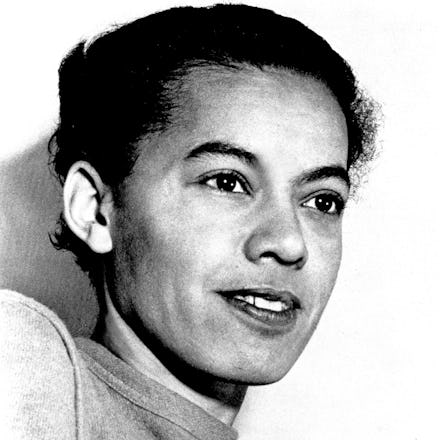Pauli Murray

This article is a part of the Black Monuments Project, which imagines a world that celebrates Black heroes in 54 U.S. states and territories.
It was in March 1940 — some 15 years before that fateful day on a segregated bus in Montgomery, Alabama — that Anna Pauline Murray decided she would not move to the back of a bus headed from Richmond, Virginia, to Durham, North Carolina.
Murray, who went by “Pauli,” and a friend were traveling from New York, where she was living after graduating from Hunter College. As the New Yorker recounted, the seats in the back of the bus were broken, so they sat near the front. The bus driver asked them to move but once they refused, he called the police and they were thrown in a local jail, catching the attention of the NAACP. In the end, Murray and her friend spent time in jail and were charged with disorderly conduct.
(Though Murray was known to present as gender nonconforming, the New Yorker pointed out that a 2017 biography detailing Murray’s life referred to her with feminine pronouns, “following Murray’s own cue.” The Pauli Murray Foundation also uses feminine pronouns.)
Stories like the one of that day on the bus — of challenging the status quo — provide a strong throughline in Murray’s life.
Murray attended Howard University’s law school — she was the only woman in her class, according to the New Yorker — and once challenged her professor that Plessy v. Ferguson would be overturned in 25 years. For her final paper, she turned that seemingly radical idea into a well-formed argument. Her professor held onto it and later shared it with Thurgood Marshall and the team who would go on to argue the case of Brown v. Board of Education.
Some of Murray’s biggest fights, though, were against gender discrimination, for which she coined the term “Jane Crow,” in reference to Jim Crow laws of the racist South. She became the top student in her law school class at Howard, but when she applied to graduate school, at Harvard University, she was rejected because she was not a man, the New Yorker reported.
Murray was tireless in her work for gender equality, and held several titles, including lawyer, educator, feminist scholar and activist. In the 1960s, she began to argue that the Equal Protection Clause of the 14th Amendment should apply to sex discrimination the same way it applies to race, Salon reported. Around the same time, Murray helped write the brief in the case that ultimately struck down the constitutionality of all-male, all-white juries. Ruth Bader Ginsburg called Murray’s career fighting gender discrimination one of the inspirations behind her brief in Reed v. Reed, which ruled that women could not be discriminated against on the basis of gender as administrators of personal estates, NPR reported.
Murray was also the first black woman the Protestant Episcopal Church ordained as a priest, according to NPR, and she was posthumously named a saint. She wrote in 1970, according to the New Yorker, “If anyone should ask a Negro woman in America what has been her greatest achievement ... her honest answer would be, ‘I survived!’”
On your shoulders, Pauli, women everywhere are standing tall.